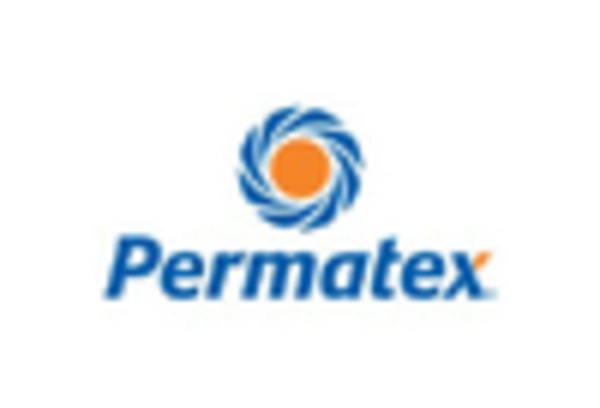Rising Awareness of Product Versatility
There is a growing awareness regarding the versatility of self fusing silicone tape, which is likely to drive its adoption across various industries. The self fusing silicone tape market is characterized by its application in diverse fields such as electrical, automotive, and plumbing. This versatility is appealing to consumers and businesses alike, as it reduces the need for multiple specialized products. Market data indicates that the demand for multi-functional materials is on the rise, with self fusing silicone tape being recognized for its ability to bond to itself without the need for adhesives. This trend may lead to increased sales and market share for self fusing silicone tape manufacturers, as they capitalize on the growing preference for adaptable and efficient solutions.
Increasing Adoption in Automotive Sector
The automotive sector appears to be increasingly adopting self fusing silicone tape due to its superior insulation and sealing properties. This trend is likely driven by the need for enhanced safety and reliability in vehicle manufacturing. The self fusing silicone tape market is projected to witness a compound annual growth rate of approximately 5% in this segment. As automotive manufacturers seek to improve the durability of electrical components, the demand for self fusing silicone tape is expected to rise. Furthermore, the ability of this tape to withstand extreme temperatures and harsh environmental conditions makes it a preferred choice for automotive applications. This shift towards advanced materials in the automotive industry may significantly influence the self fusing silicone tape market, potentially leading to increased market penetration and innovation in product offerings.
Emphasis on Safety and Compliance Standards
The emphasis on safety and compliance standards across various industries is likely to bolster the self fusing silicone tape market. As regulations become more stringent, companies are compelled to utilize materials that meet safety requirements. Self fusing silicone tape is known for its non-toxic and environmentally friendly properties, making it an attractive option for industries that prioritize safety. The market data suggests that industries such as electrical and automotive are increasingly focusing on compliance with safety standards, which may drive the demand for self fusing silicone tape. This trend could result in a significant uptick in the adoption of self fusing silicone tape, as businesses seek to align with regulatory expectations while ensuring the safety of their products.
Growth in Construction and Infrastructure Projects
The construction and infrastructure sectors are experiencing notable growth, which may positively impact the self fusing silicone tape market. As new projects emerge, the demand for reliable sealing and insulation materials is likely to increase. Self fusing silicone tape is particularly valued for its ability to create strong, waterproof seals, making it suitable for various applications in construction. The market data suggests that the construction industry is expected to expand at a rate of around 4% annually, thereby driving the need for high-performance materials like self fusing silicone tape. This growth could lead to a broader acceptance of self fusing silicone tape in construction, as builders and contractors seek efficient solutions for sealing and protecting electrical and plumbing installations.
Technological Innovations Enhancing Product Performance
Technological innovations in the manufacturing of self fusing silicone tape are likely to enhance product performance, thereby driving market growth. The self fusing silicone tape market is witnessing advancements that improve the durability, adhesion, and temperature resistance of these products. Innovations such as the incorporation of advanced polymers and additives may lead to superior performance characteristics, making self fusing silicone tape more appealing to consumers. Market data indicates that the introduction of high-performance variants could capture a larger share of the market, as industries seek reliable solutions for demanding applications. This focus on innovation may not only expand the product range but also attract new customers, further propelling the growth of the self fusing silicone tape market.
















Leave a Comment